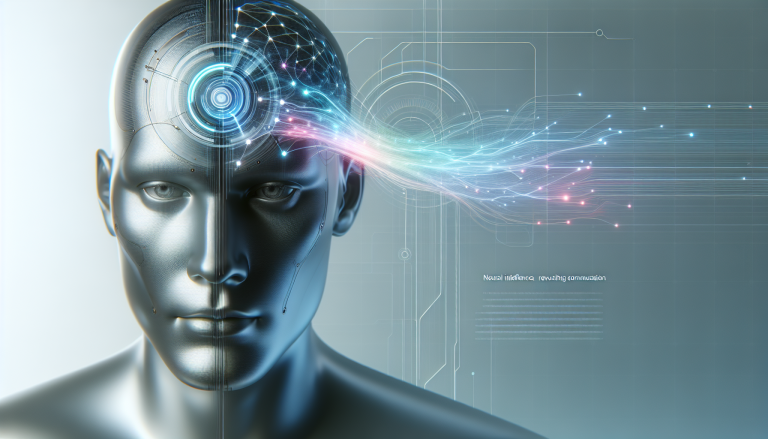Neural Interfaces: The Dawn of Direct Brain-to-Machine Communication

In the rapidly evolving arena of technology, one advancement poised to reshape human interaction with digital systems is neural interface technology—or brain-computer interfaces (BCIs). This groundbreaking field stands at the intersection of neurobiology and sophisticated engineering, forging a path that could redefine how we communicate, work, and live. Neural interfaces allow for direct bidirectional communication between the brain and external devices, eliminating traditional intermediaries such as keyboards or touchscreens. This innovation signals a paradigm shift that transcends current tech capabilities, opening doors to possibilities once confined to the realm of science fiction.
Unlocking Potential Through Real-World Applications
The allure of neural interfaces lies in their diverse real-world applications, spanning from medical rehabilitation to augmented cognition. In healthcare, BCIs are transformative for patients with motor disabilities, offering new avenues for restoring mobility and autonomy. For example, individuals suffering from spinal cord injuries or amyotrophic lateral sclerosis (ALS) can use neural implants to control prosthetic limbs or communicate through speech synthesis devices activated solely by thought. The pioneering work by companies such as Neuralink and academic institutions like the University of Pittsburgh has demonstrated remarkable progress in enabling paralyzed patients to manipulate robotic arms or digital cursors with their minds, restoring a level of independence previously unattainable.
Beyond rehabilitation, neural interfaces are being integrated into the realm of virtual reality (VR) to create immersive experiences that respond to users’ intentions directly. This fusion of VR and neural tech enhances not only gaming and entertainment but also training simulations for high-stakes professions like surgery and aerospace. Imagine pilots or surgeons operating within virtual environments controlled purely via thought, honing skills with unprecedented precision and feedback.
In commercial and industrial sectors, BCIs have begun to improve human-machine collaboration. Workers engaged in complex operations, such as air traffic control or manufacturing, can benefit from neural systems that reduce cognitive load by streamlining communication and controlling machinery through mental commands. Additionally, BCIs are being explored in enhancing creativity and focus by monitoring brain states to optimize work performance, offering fresh paradigms for productivity in a tech-centric world.
Societal and Industrial Impact: A New Frontier in Human-Technology Synergy
The integration of neural interfaces into everyday life heralds profound societal and industrial transformations. On a societal level, the empowerment of individuals with neurological conditions could dramatically shift healthcare dynamics, reduce caregiving burdens, and foster inclusivity. Access to thought-activated devices catalyzes social participation, education, and employment opportunities for those previously limited by physical impairments.
Industrially, neural interface technology introduces new modalities for human augmentation, blurring lines between organic cognition and machine intelligence. This development is catalyzing a wave of innovation in sectors like automotive, aerospace, defense, and consumer electronics, where brain-controlled interfaces promise enhanced safety, operational efficiency, and user customization.
The tech industry’s response to neural interfaces illuminates its growing strategic importance. Technology giants like Microsoft are investing heavily in neurotechnology research, integrating AI-driven data processing with neural signals to enable more intuitive controls and personalized experiences. Similarly, Facebook’s Reality Labs is exploring neural wristbands aimed at mental communication, pointing to a future where digital expression extends beyond voice and touch.
Ethical Dimensions and Challenges in Neural Interface Development
While the prospects are dazzling, neural interfaces provoke critical ethical considerations demanding thoughtful discourse. Central among these are privacy, consent, and the potential for cognitive manipulation. Neural data, by its very nature, is deeply intimate, containing not only conscious intentions but also subconscious patterns. The safeguarding of this sensitive information against unauthorized access or exploitation is paramount, especially as BCIs become interconnected with cloud computing and AI-driven analytics.
Moreover, the prospect of enhancing cognitive abilities beyond natural human limits raises questions about equity and access. Without equitable distribution, neural augmentation could exacerbate societal divides, creating ‘neuro-elite’ classes with superior capabilities. The risk of coercion or undue influence in workplaces or militaries, where cognitive enhancements could become mandatory, also demands regulatory oversight.
Ethicists and researchers are advocating for frameworks that balance innovation with human rights protections. Regard for informed consent, ongoing monitoring of psychological effects, and transparency in how neural data is used are essential. Organizations like the IEEE Global Initiative on Ethics of Autonomous and Intelligent Systems are developing guidelines to navigate these complexities as neural tech surges forward.
Key Innovators and the Ecosystem Driving Neural Interface Technology
Several key players are pivotal in advancing neural interface technology. Neuralink, founded by Elon Musk, leads with its vision of high-bandwidth brain-machine interfaces implanted minimally invasively. Its prototype devices utilize flexible threads that interface with thousands of neurons, aiming to enable simultaneous communication and stimulation. Their successful demonstrations in primates, where brain signals piloted computers and robotic appendages, underline imminent human trials.
Kernel, spearheaded by Bryan Johnson, approaches neural interfaces with a non-invasive focus, leveraging wearable devices to measure brain activity and enhance cognition. Kernel’s mission to map the brain’s functioning at scale reflects how technology can intersect with neuroscience to unlock human potential without surgical intervention.
Meta (formerly Facebook) explores BCI technologies with the objective of facilitating ‘silent speech’ through wrist-worn devices, indicating a novel approach in consumer tech with potential impacts on communication accessibility and efficiency.
Academic institutions such as the Center for Neurotechnology at the University of Washington and the Wyss Center in Switzerland continue to deepen understanding of neural signal processing and develop innovative hardware platforms.
Artificial intelligence plays a crucial role in neural interface evolution by decoding complex brain signals and translating them into actionable commands. Cutting-edge machine learning algorithms enhance signal clarity, reduce noise, and personalize interfaces to individual neural architectures, allowing for more precise and meaningful interaction.
Future Trajectory: Bridging Minds and Machines
The path ahead for neural interfaces is one of accelerating convergence between brain science, AI, and advanced hardware engineering. Future iterations promise less invasive, more robust implants that seamlessly integrate with existing neural networks while minimizing biological rejection or wear.
Emerging trends include bidirectionality—where devices not only read brain signals but also provide targeted stimulation to modulate mood, memory, or pain response. This capability could revolutionize treatments for depression, epilepsy, or chronic pain.
Furthermore, the integration of BCIs into the Internet of Things (IoT) envisions a connected ecosystem where brain commands control ambient devices, vehicles, and communication systems fluidly. This shifts us toward an era where human intent is the ultimate interface, operating across diverse tech landscapes effortlessly.
In the longer term, the aspiration of collective cognition through networked BCIs hints at a future where human minds might link, share experiences, or collaborate on problem-solving in unprecedented ways. Such a leap could redefine knowledge sharing, creativity, and social interaction on a global scale.
Neural interface technology stands as a beacon of transformative tech innovation. It elevates the interface paradigm from peripheral tools to intrinsic extensions of the human mind, embodying the essence of technology as a force to enhance and expand human experience. By harnessing this emerging frontier responsibly, the tech world may usher in an era of empowerment, connectivity, and discovery that reshapes humanity’s relationship with machines.


